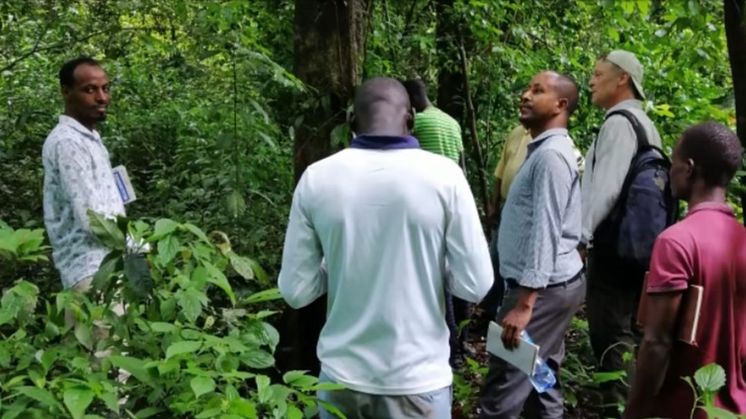
Nyhed -
New initiative from Forests of the World to improve forest monitoring in Ethiopia with technology
Forests of the World is working on a project in southwestern Ethiopia to help make forest protection from threats such as illegal logging and conversion to agriculture more effective. Members of local forest management groups are trained in the use of digital tools to better monitor and protect forests.
By Naja Karoline Heuch and Ida Lund Petersen
In the Kafa region of southwestern Ethiopia, Forests of the World has started an effort that focuses on digitally collecting forest monitoring data to help protect the area's forests. Here, local communities are involved in collaborative data collection, creating a shorter distance between the decisions made by the authorities and the people who use and care for the forests.
From changes being observed in Kafa's forests, to the affected areas being investigated for illegal logging, to the information reaching the decision-makers, the processes are very long and too much time is lost in bureaucratic processes. This creates complications for both those who make the decisions about illegal activities in the forests and those who are actually present and in practice manage and care for the forests.
Lessons from Latin America to Ethiopia
Jens Noe Hansen, Technical Advisor at Forests of the World, has been in Kafa to explore the possibilities of involving local forest management groups to help collect data and document what is happening in the forests as part of the work to monitor and protect the forests from illegal or other unwanted activities. Involving local people in forest areas and using appropriate data collection tools can have a significant impact on how quickly and effectively they and the aid organizations they work with can engage and respond to illegal logging.
For Forests of the World, the use of digital tools to monitor forests is nothing new. In Latin America, where we work with indigenous peoples on forest monitoring, digital data collection is well on its way to becoming an indispensable tool for keeping an eye on illegal activities in the forests. Similarly, armed with cell phones, the local people of Kafa will be able to monitor the condition of the forests. They can then notify their partners and the authorities when something illegal is happening so that they can react quickly.
Forest management groups protect the forests
There is almost no indigenous forest left in Ethiopia. Therefore, looking after the country's last forests is a political priority. As a solution, in many cases the authorities have delegated the responsibility of managing and caring for the forests to local forest management groups. In return, members can use various resources from the forests. For example, they can set up beehives or hives for honey production, collect firewood, fetch clean water and gather food.
However, there are strict rules for local people's use of the forests, not least for logging. Although logging can take place without compromising the quality of the forests, the authorities fear that such a permit will be abused and they will lose control of the forests. Most often, however, it is not the local people who cut down forests, but outsiders who want to use the land commercially.
"We believe that the local people who help manage and protect the forests should also have access to use wood from the forests sustainably, for example by being able to sell sustainably produced timber to a certain extent and earn an income from the forests. This is what they need to make ends meet and continue to take care of the forests. By promoting the use of free and easy-to-use digital tools to monitor forests, we can hopefully help demonstrate to the authorities that local people are deeply committed to using their forests sustainably and protecting them from illegal activities. At the same time, it can help them utilize timber and other wood products without destroying or degrading them," says Jens Noe Hansen.
The project benefits both forest and people
Jens Noe Hansen believes that the project can have many positive impacts beyond making it easier to keep an eye on what's happening and protect forests. It can also help give people basic digital skills, better insight into the forest they care for and more democratic rights.
Because the project revolves around the use of mobile technology, Jens Noe Hansen sees great potential in engaging more young people. Young people are often interested and have an intuitive understanding that allows them to quickly adopt new technology, which they can use to help monitor and take care of their forests.In addition, young people will be able to apply their experience with new technology in many other contexts that will benefit them in their future.
In addition, Jens Noe Hansen says that with this project, local people are given the opportunity to take even more responsibility for their forests. When they take responsibility for the forests, they also take ownership of them, what happens here and now and how they develop in the future. So not only can the project reduce the bureaucratic process of forest protection, but it can also help convince authorities and other critics that local people can use and manage their forest resources sustainably, so that in the future they can begin to share more of the value that their forests create.
